01:00
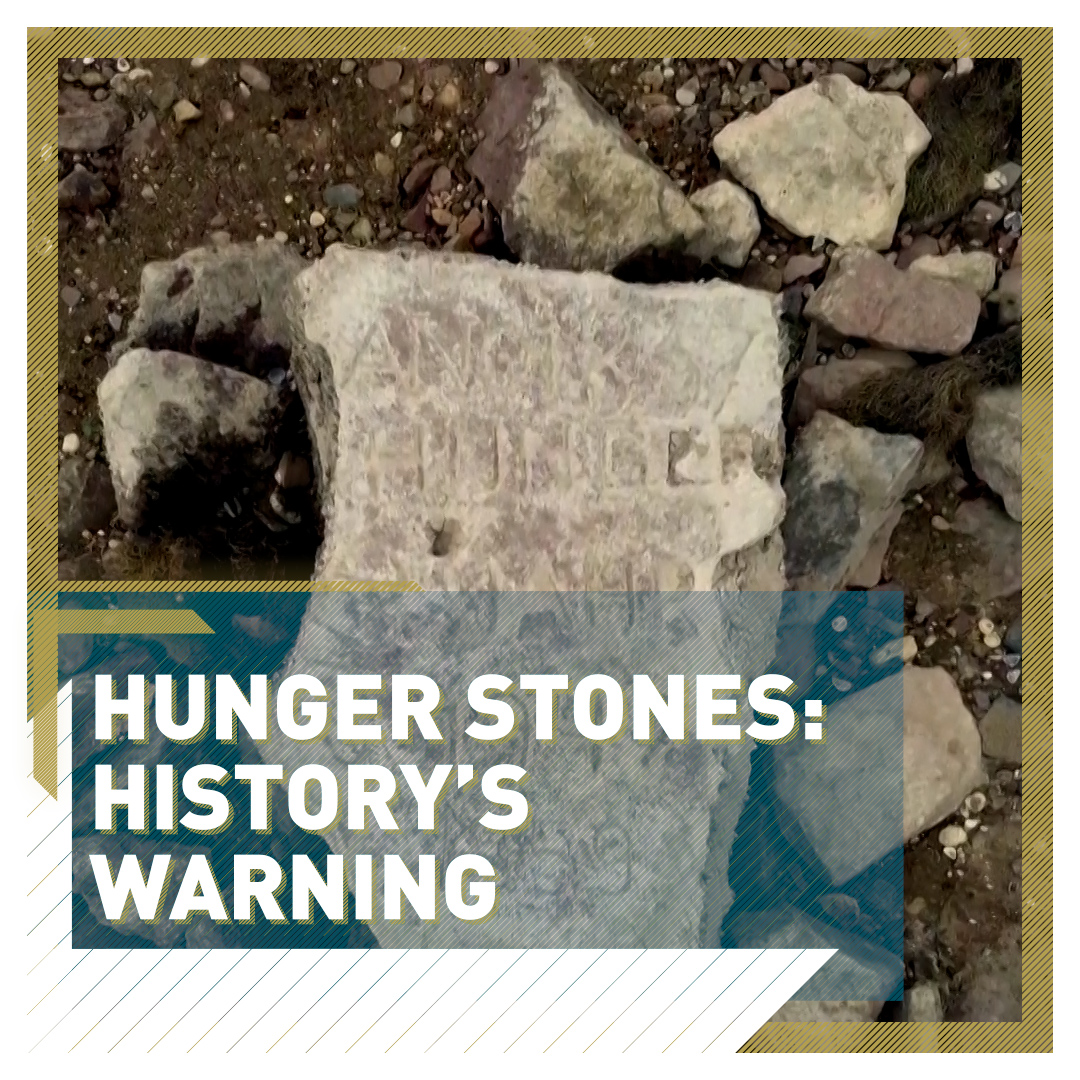
As a blistering European summer starts to slide towards a winter that inflation and fuel shortages could render lethally unforgiving, European thoughts can wander to worrying about the future. If so, it wouldn't be the first time – as the continent's "hunger stones" attest.
Hungersteine are hydrologically-hidden surprises: messages carved on low-lying rocks, usually hidden by the flow of the river, but exposed in times of drought – an ancient harbinger of hunger via restricted navigation, failed crops and poor harvests.
Usually denoted with the drought year and often the carver's name or initials, these fluvial finds are warnings from history. There are dozens of them, concentrated in Germany but also in parts of Czechia, Hungary and Switzerland.
Hunger stones are found in the Danube, the Weber, the Rhine and its tributaries the Moselle and the Aar – but there is a particular concentration of them in the Elbe, that 1,000-kilometer frontier draining from Bohemia to Hamburg, the river at which the U.S. and Russian troops met as World War II came to a close and which thereafter served as the border between West and East Germany.
Indeed, it's near the current German border that the Elbe hosts one of the most famous hunger stones, at the Czech city of Decin. Here, etched upside down from above on an enormous rock usually submerged by the river, is the chilling legend "When you see me, weep."
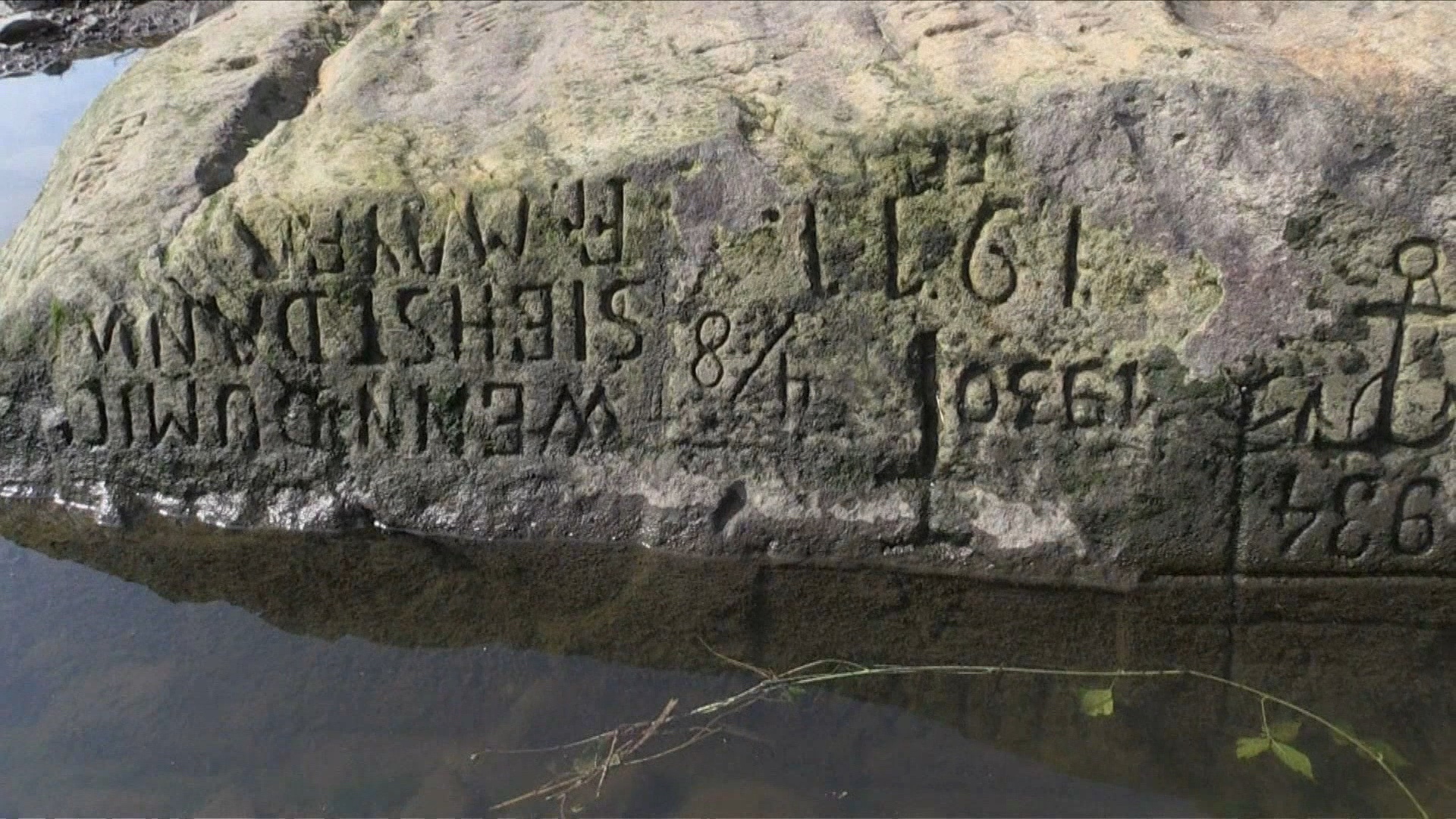
The stone in Decin, Czechia, bears the marks of many hands. /AFP
The stone in Decin, Czechia, bears the marks of many hands. /AFP
Such a downbeat tone is typical of hunger stones, melancholy emblems of worrisome times. When rivers run low, it impedes navigation and trade – a difficulty currently being experienced on some of Europe's major water routes – but drought is traditionally also followed by crop failure, hunger and sometimes famine.
The stone carvers were hardly having fun in the sun. Their messages were warnings for future generations. At the beginning of the 20th century, a hunger stone emerged from the Spree (an Elbe tributary) near Trebatsch, 70 kilometers southeast of Berlin; it said "When you see this stone again, you'll cry, so shallow was the water in the year 1417.”
The Trebatsch stone is the oldest locatable hunger stone – archives in the German city of Pirna mention one inscribed in 1115, but nobody knows quite where it is. It's not the only example lost to history: Some were also removed to aid navigation.
One example was spotted and described by the writer Victor Hugo in his 1842 travelog The Rhine. The Altarstein, as it was known, was near Bacharach, 60 kilometers west of Frankfurt; thought to be an ancient shrine to the wine god Bacchus, its occasional emergence was taken to be a sign of a good year for the vintners. Sadly for them, in 1850 it was dynamited to expedite shipping.
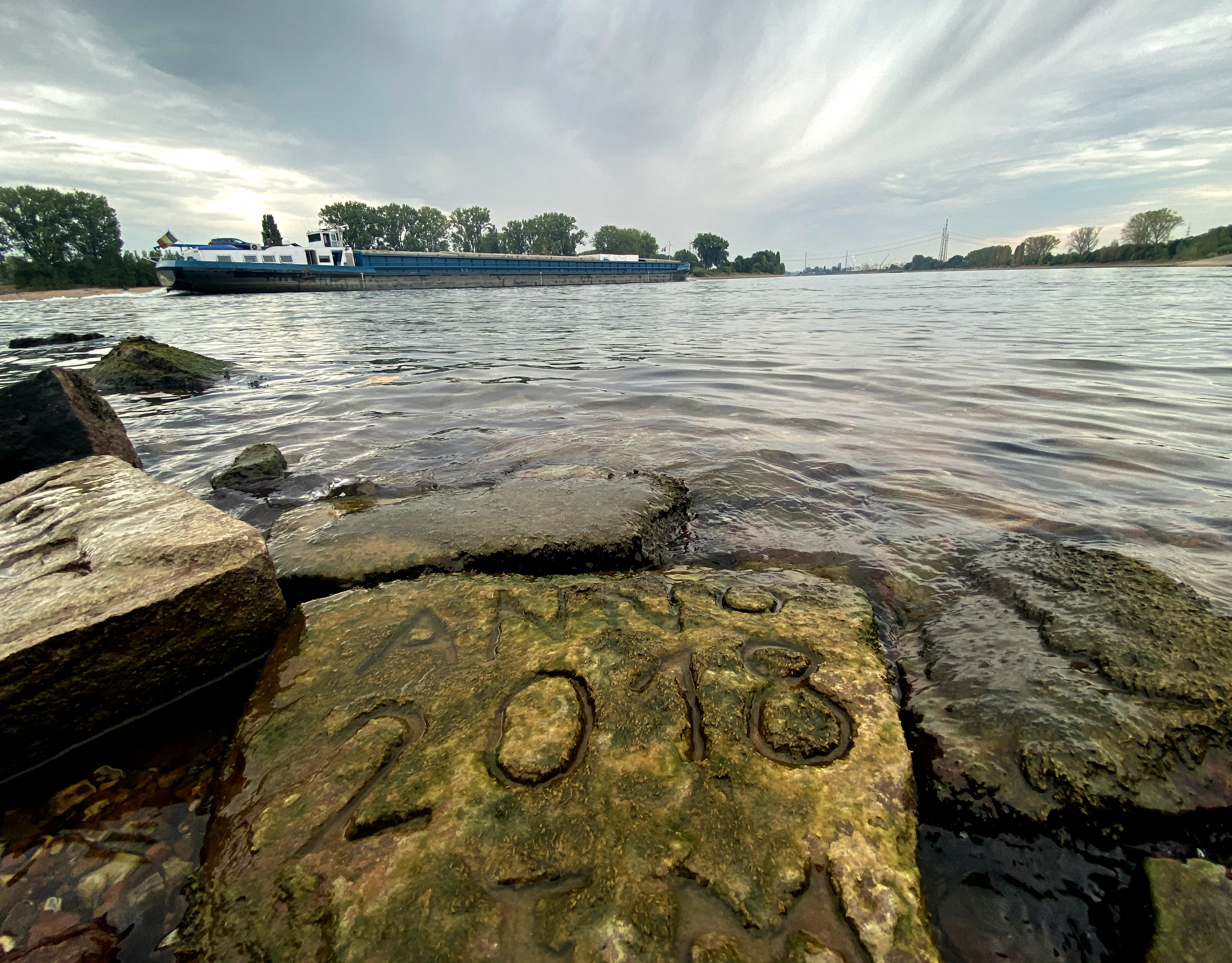
Low water levels have always affected navigation – and the ships we rely on aren't getting any smaller. /Tilman Blasshofer /Reuters
Low water levels have always affected navigation – and the ships we rely on aren't getting any smaller. /Tilman Blasshofer /Reuters
The 19th century was, however, a boom time for hunger stones. A somewhat morbid popular enthusiasm for humankind's self-elevation from past suffering, combined with booming mass media such as newspapers and travelogs like Hugo's, brought the idea to a wide audience.
By 1904 the "When you see me, weep" Decin stone had been fenced off for its own preservation. Local entrepreneur Franz Mayer had made it a tourist attraction: "He sold postcards with the stone and had a beer stand right next to it," says Vlastimil Pazourek, head of the city's regional museum.
Being records of human emotion, the stones can also strike a sterner tone. In the 1930s someone added a brusque inscription in Czech, reading: "Girl, don't cry and moan when it's dry, water the fields instead."
The oldest date still legible on the Decin stone is 1616, with previous carvings from 1417 and 1473 having been wiped out by anchoring ships over the centuries. But despite the occasional loss to erosion and explosion, hunger stones function as historical record.
Often predating careful climate documentation, they can give scientists clues to unusually dry summers. The Decin stone alone marks droughts in 1616, 1707, 1746, 1790, 1800, 1811, 1830, 1842, 1868, 1892, and 1893.
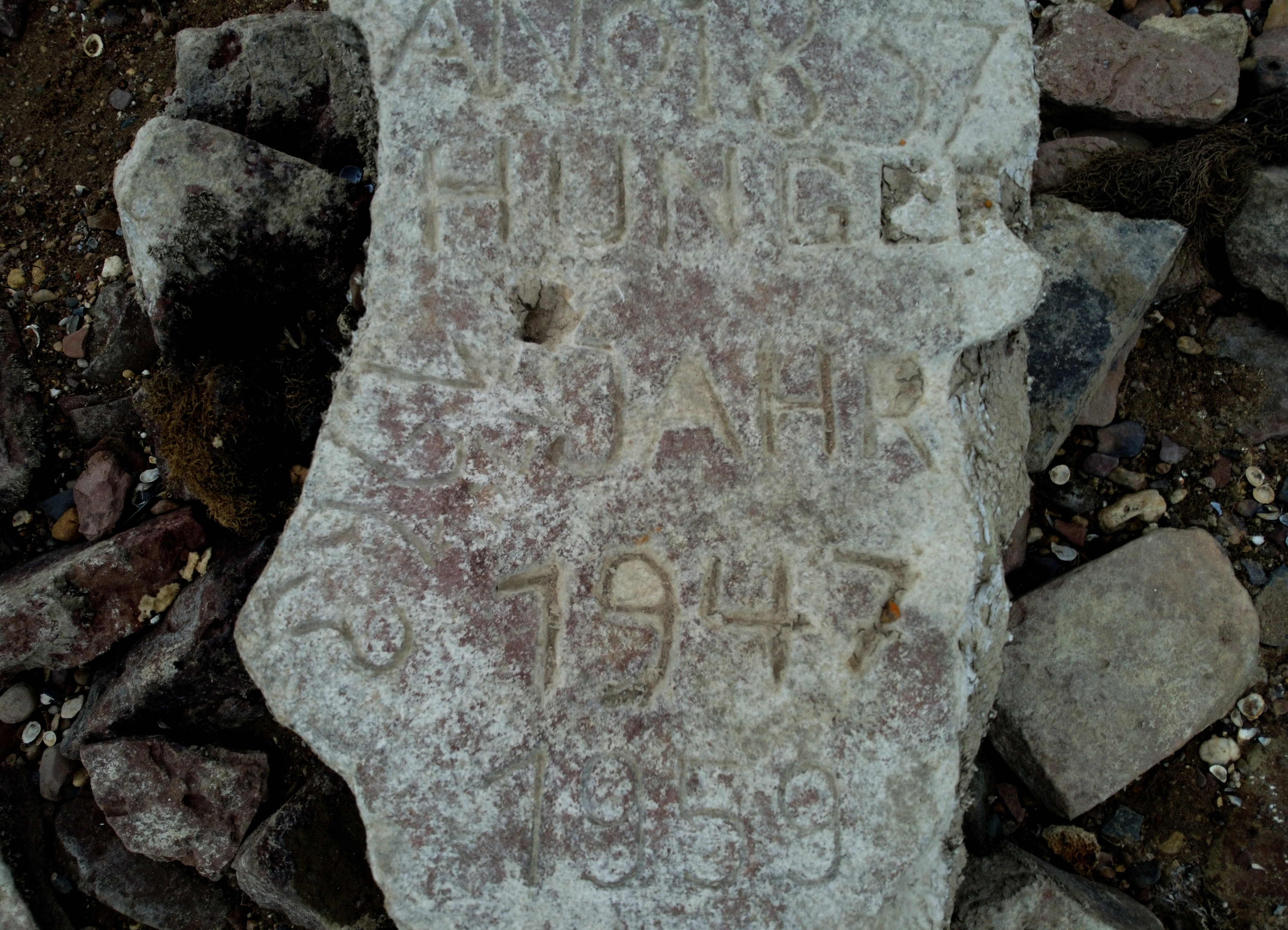
In Worms, Germany, one Hungerstein has been etched in several summers. /Max Schwarz/Reuters
In Worms, Germany, one Hungerstein has been etched in several summers. /Max Schwarz/Reuters
It's also a record of the common people – unlike many written records, hunger stones were available to anyone with a sharp tool and a spare hour. In a 2013 study, Czech researchers described hunger stones as "chiseled with the years of hardship and the initials of authors lost to history," saying they "expressed that drought had brought a bad harvest, lack of food, high prices and hunger for poor people."
Decin museum chief Pazourek says "We know hunger stones as places marking dry years on the Elbe – times when there was little water in the river and rafters had a hard time making a living." Via the stones, sufferers reach out through the centuries; one in the Rhine near Worms-Rheindurkheim was first inscribed in 1857, and most recently in "Hunger Year 1947"; under it, another hand has added "1959."
Although the majority of hunger stones date between the 15th and 19th centuries, many have been regularly updated – and there has been something of a renaissance in the dry summers of the last 20 years. Severe European droughts in 2003, 2015 and 2018 led to stones surfacing.
While modern drought does not necessarily lead to famine, thanks to globalized agriculture and supply chains, the climate situation is certainly worsening.
The European Commission's Global Drought Observatory called this summer Europe's worst in 500 years, with 47 percent of the continent under drought warnings – meaning a lack of precipitation is drying the soil – while a further 17 percent is under even more serious drought alert, in which vegetation shows signs of stress.
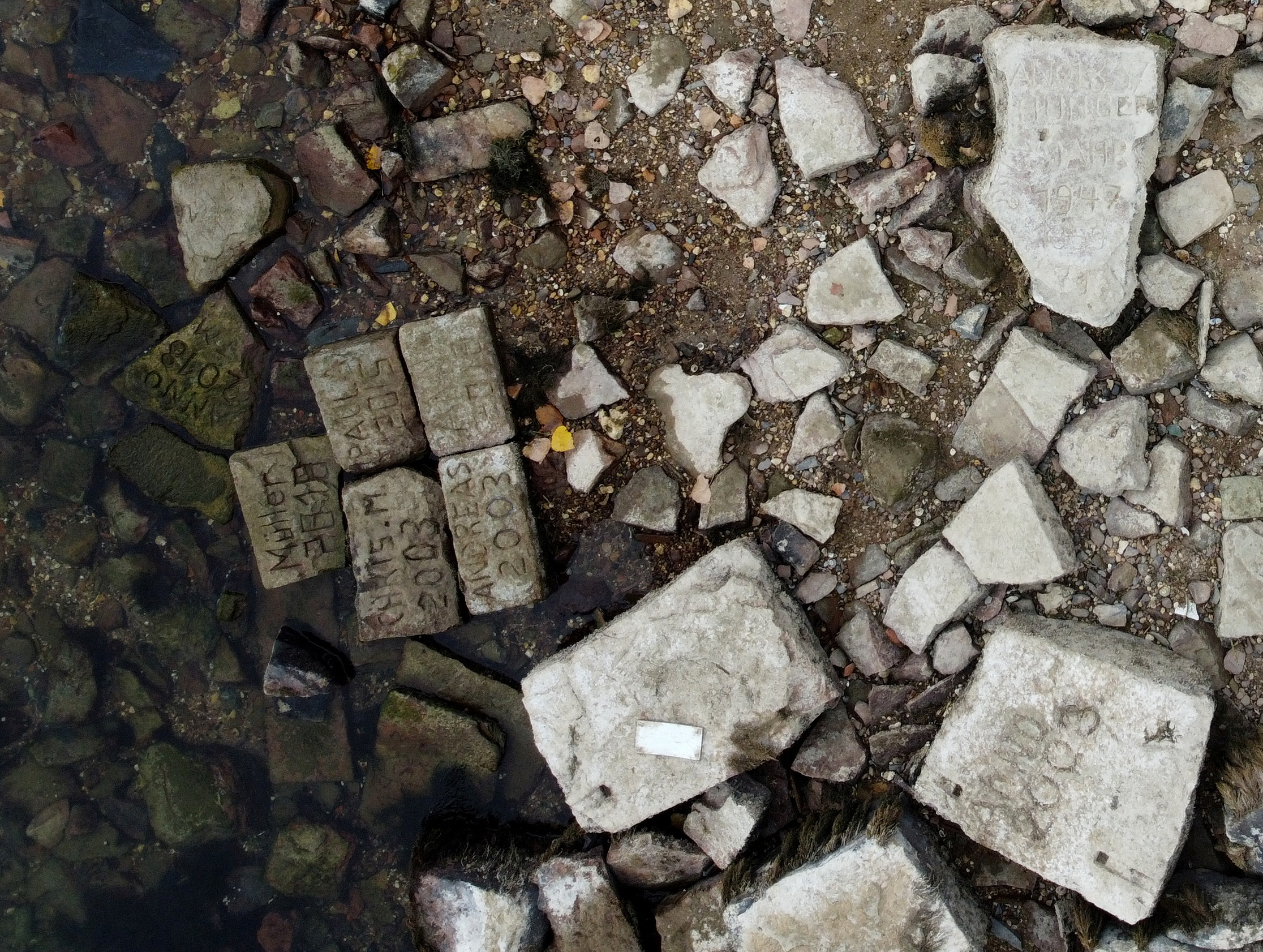
The hunger stones in Worms have proliferated in recent years. /Max Schwarz/Reuters
The hunger stones in Worms have proliferated in recent years. /Max Schwarz/Reuters
The increasingly frequent visibility of the stones, then, is thought to be a manifestation of climate change in central Europe. No wonder then that ecological groups have been marking hunger stones to raise awareness.
In 2018 Greenpeace placed a stone in the Elbe near Magdeburg saying "When you see me, the climate is in crisis," and just this year Extinction Rebellion placed one in the Rhine at the Dutch town of Wageningen, with the legend "Climate justice 2022."
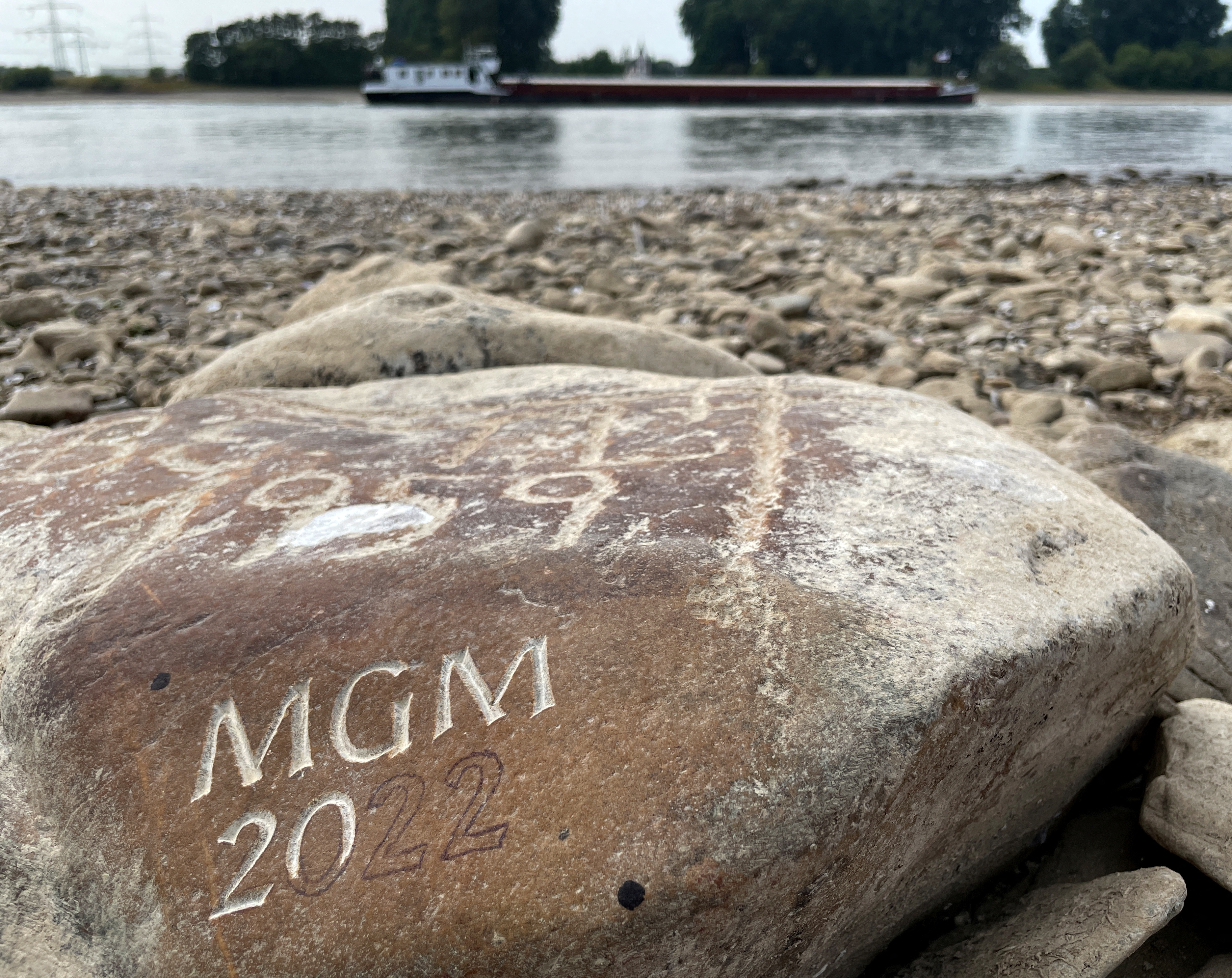
This stone, in Rheindorf, Germany, is one of the newest. /Andy Kranz/Reuters
This stone, in Rheindorf, Germany, is one of the newest. /Andy Kranz/Reuters
While nobody should be immune to worries about climate change, not all locals view the hunger stones as unwelcome visitors. Indeed, the good people of Meissen, on the Elbe near Dresden in Germany, added a new one in 2018.
Perhaps, like the naked trees of darkest winter, the hunger stones are part of life's cycle, to be marked and commemorated. On another in the Elbe near Bleckede in Germany is the message: "When this goes under, life will become more colorful again."

